




Copyright 2012 by Nigel G Wilcox All Rights reserved E-Mail: ngwilcox@gmx.co.uk
The Roman Empire - The Death of Rome



Powered By Sispro1
Roman MENU
Copyright All Rights Reserved by Nigel G Wilcox E-Mail: ngwilcox100@gmail.com
Designed by Nigel G Wilcox
The Paragon Of Metal Detecting
& Archaeology
& Archaeology
5. Menu
Pages
Member NCMD
The Biggest Reasons The Roman Empire Fell
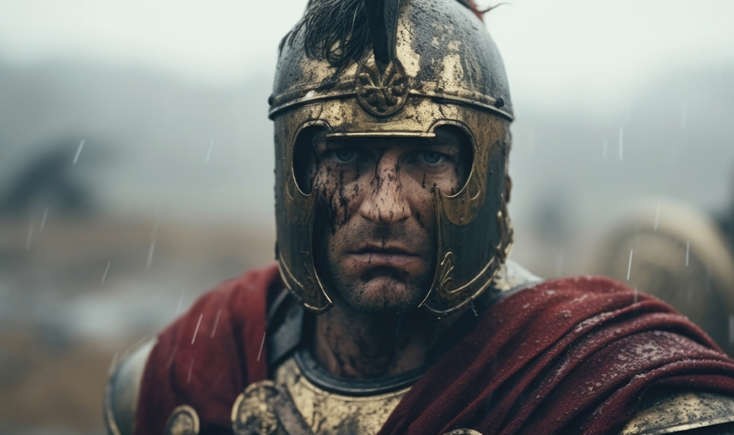
< Fingers Of Blame…
Rome’s demise took centuries to complete—and six volumes to explain in the Decline And Fall Of The Roman Empire. Edward Gibbon, an 18th-century English historian, pinned part of the blame on Christianity, but modern historians see more-likely suspects, so let’s investigate!
Rome’s demise took centuries to complete—and six volumes to explain in the Decline And Fall Of The Roman Empire. Edward Gibbon, an 18th-century English historian, pinned part of the blame on Christianity, but modern historians see more-likely suspects, so let’s investigate!
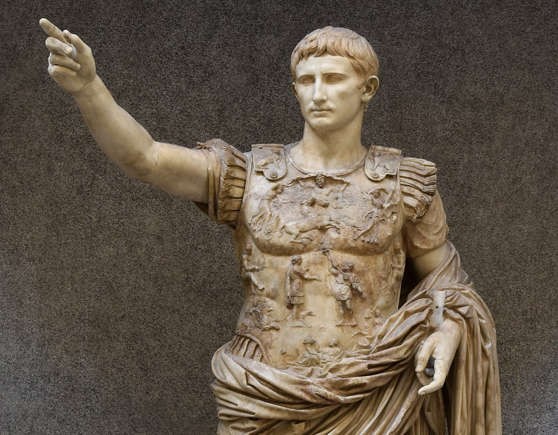
©Vatican Museums, CC BY-SA 4.0, Wikimedia Commons
Long Live The Republic! >
Augustus became the Roman Empire’s first leader when the Roman Republic, ill for some time, passed around 27 BCE. The ultimate cause included Julius Caesar’s assassination and Antony and Cleopatra’s uprising. And now Rome’s first emperor offered stability.
Augustus became the Roman Empire’s first leader when the Roman Republic, ill for some time, passed around 27 BCE. The ultimate cause included Julius Caesar’s assassination and Antony and Cleopatra’s uprising. And now Rome’s first emperor offered stability.

©Olaf Tausch, CC BY 3.0, Wikimedia Commons
< The Road To A New Future
Through his four decades of power, Augustus would take over Egypt and complete Rome’s conquest of Iberia. He’d create an extensive road system on which Roman legions and couriers could speed. And he fixed an erratic taxation system, vastly improving Rome’s finances.
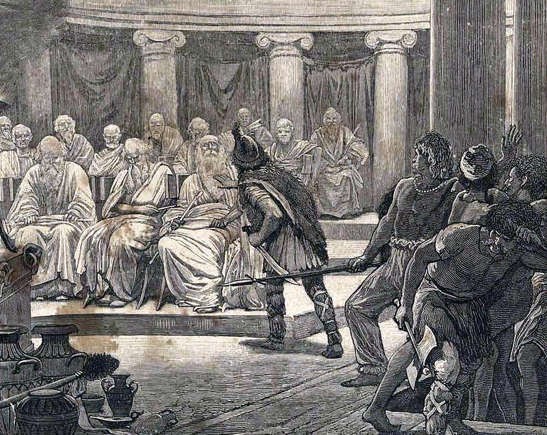
©Ollier, Edmund, Wikimedia Commons
Germania Fights Back >
But he also sowed the seeds of discontent. His armies took over Gaul, but made the mistake of crossing the Rhine in 13 BCE. Augustus eventually won enough land to add “Germania” to his empire, but in 9 CE, an ambush massacring three Roman legions prompted a quick retreat.
But he also sowed the seeds of discontent. His armies took over Gaul, but made the mistake of crossing the Rhine in 13 BCE. Augustus eventually won enough land to add “Germania” to his empire, but in 9 CE, an ambush massacring three Roman legions prompted a quick retreat.

©Évariste Vital Luminais, Wikimedia Commons
< Roman Subterfuge
But Rome kept up pressure by playing one Germanic tribe against the other and meddling in who got selected as tribal leaders. There were brief skirmishes and revolts, but things stayed fairly quiet until 168, when “barbarians” invaded northern Italy in a 12-year conflict.
But Rome kept up pressure by playing one Germanic tribe against the other and meddling in who got selected as tribal leaders. There were brief skirmishes and revolts, but things stayed fairly quiet until 168, when “barbarians” invaded northern Italy in a 12-year conflict.

©rivigan, CC BY-SA 2.0, Wikimedia Commons
A Reluctant Welcome >
To get some peace, Rome agreed to let some of the invaders settle on Roman land, even if it destabilized some areas. Then Goths invaded Rome’s Black Sea territory in 238, followed by a major victory over the Romans at Philippopolis in present-day Bulgaria in the year 250.
To get some peace, Rome agreed to let some of the invaders settle on Roman land, even if it destabilized some areas. Then Goths invaded Rome’s Black Sea territory in 238, followed by a major victory over the Romans at Philippopolis in present-day Bulgaria in the year 250.

©After Eduard Bendemann, Wikimedia Commons
< A Bigger Danger
Things seemed to quiet down a bit, but then came a couple of twists. Rome started relying on Germanic forces to defend itself against Germanic forces, all the while paying some tribes to beat up other tribes. Then the Huns showed up in 375, pushing more Goths into the Empire.
Things seemed to quiet down a bit, but then came a couple of twists. Rome started relying on Germanic forces to defend itself against Germanic forces, all the while paying some tribes to beat up other tribes. Then the Huns showed up in 375, pushing more Goths into the Empire.
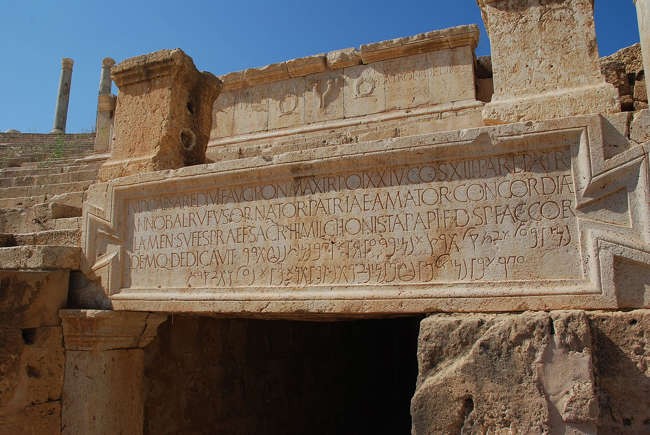
©Papageizichta, CC BY-SA 3.0, Wikimedia Commons
Gothic Displeasure >
Rome granted some of the fleeing Goths asylum, but treated them badly, forcing some parents to give up their children to slavery in exchange for dog meat. The Visigoths were getting pretty restless over Roman nastiness, corruption, and bureaucracy, so Emperor Valens showed up.
Rome granted some of the fleeing Goths asylum, but treated them badly, forcing some parents to give up their children to slavery in exchange for dog meat. The Visigoths were getting pretty restless over Roman nastiness, corruption, and bureaucracy, so Emperor Valens showed up.

©C. Murer, CC BY 4.0, Wikimedia Commons
< Roman Vulnerability
In present-day northeastern Greece, Valens led his Roman legions to their doom—and lost his own life—at the Battle of Adrianople in 378. After various revolts and battles, some Visigoths were settled in Gaul in exchange for becoming allies, and Rome no longer looked so invincible.
In present-day northeastern Greece, Valens led his Roman legions to their doom—and lost his own life—at the Battle of Adrianople in 378. After various revolts and battles, some Visigoths were settled in Gaul in exchange for becoming allies, and Rome no longer looked so invincible.

©Allan Stewart, Wikimedia Commons
When In Rome… >
Meanwhile, the Huns kept advancing, pushing more Goths onto Roman territory. In turn, the Visigoths’ first king, Alaric, sacked Rome in 410, then fled to Gaul. As a bad century for Romans wore on, they also lost Carthage to the Vandals in 430, bringing more Mediterranean piracy.
Not A Good Move
Meanwhile, Roman Emperor Valentinian III personally assassinated his brilliant general Aetius, who had helped defeat the Huns at the Battle of the Catalaunian Plains in Gaul in 451 CE. After Attila’s passing in 453, the weakened Huns gradually dissipated. Aetius had proven his worth.
Meanwhile, the Huns kept advancing, pushing more Goths onto Roman territory. In turn, the Visigoths’ first king, Alaric, sacked Rome in 410, then fled to Gaul. As a bad century for Romans wore on, they also lost Carthage to the Vandals in 430, bringing more Mediterranean piracy.
Not A Good Move
Meanwhile, Roman Emperor Valentinian III personally assassinated his brilliant general Aetius, who had helped defeat the Huns at the Battle of the Catalaunian Plains in Gaul in 451 CE. After Attila’s passing in 453, the weakened Huns gradually dissipated. Aetius had proven his worth.
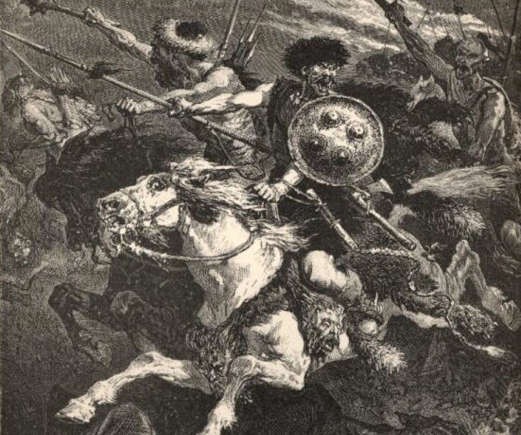
©Lordkinbote, Wikimedia Commons
< Ferocious Vandalism
But with Aetius out of the picture and Huns becoming less of a concern, Vandals were on the ascendant. In 455, it was the Vandals who were sacking Rome—and with such determination and ferocity that the English terms vandal and vandalism would enter our modern lexicon.
But with Aetius out of the picture and Huns becoming less of a concern, Vandals were on the ascendant. In 455, it was the Vandals who were sacking Rome—and with such determination and ferocity that the English terms vandal and vandalism would enter our modern lexicon.
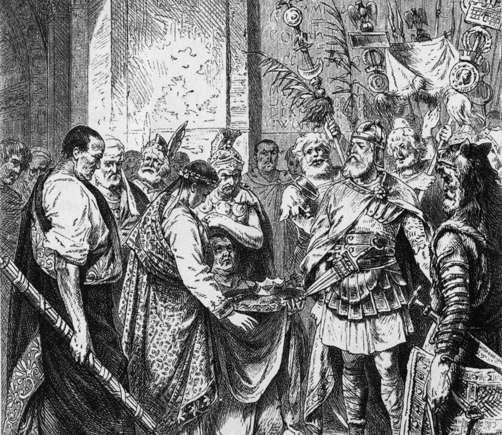
©B. Moerlins, Wikimedia Commons
The Last Emperor >
Though there are different falls one can point to, it seems the most dramatic of moments was soon approaching. In 476, Odoacer, a Germanic commander for the Roman Empire rebelled and overthrew the Western Empire’s last emperor, a boy named Romulus Augustus.
Though there are different falls one can point to, it seems the most dramatic of moments was soon approaching. In 476, Odoacer, a Germanic commander for the Roman Empire rebelled and overthrew the Western Empire’s last emperor, a boy named Romulus Augustus.
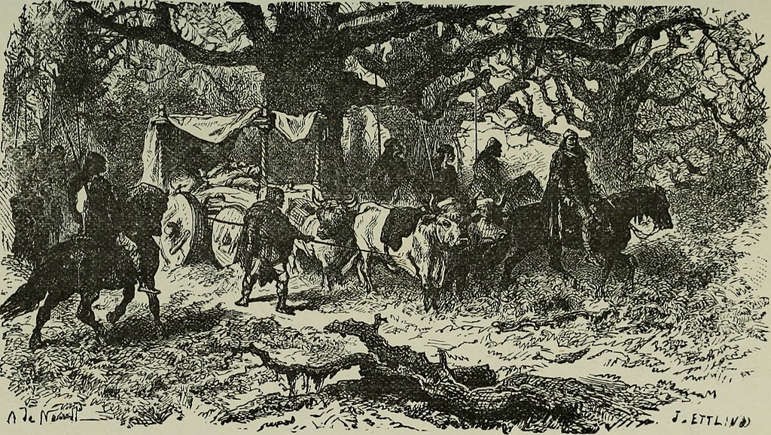
©Bradley, Henry, Wikimedia Commons
< Making It Obvious
The “barbarians” had been wielding effective power for decades, so Odoacer’s move was just making it plain that formalities of the past didn’t reflect current reality. The despised and belittled Germanic peoples, at best seen as second-class mercenaries, were now evidently in charge.
The “barbarians” had been wielding effective power for decades, so Odoacer’s move was just making it plain that formalities of the past didn’t reflect current reality. The despised and belittled Germanic peoples, at best seen as second-class mercenaries, were now evidently in charge.
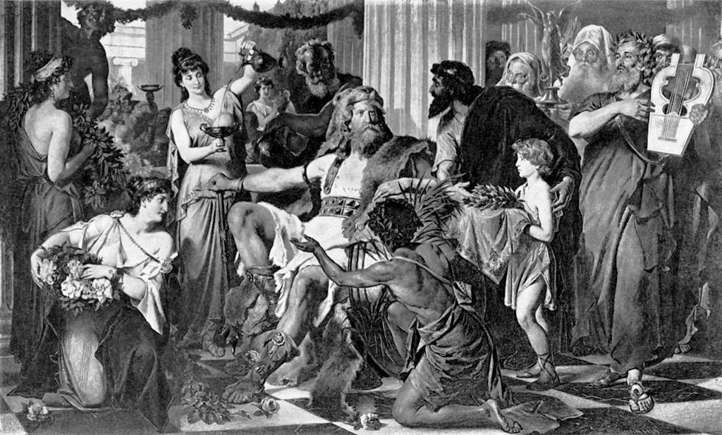
©Ludwig Thiersch, Wikimedia Commons
Taxing His Patience >
And then there was the money. Despite there being an Emperor in the West and in the East, there was just one treasury. Odoacer was likely fed up with his side’s taxes going into a common pot from which little returned to the West. Now Odoacer could spend the very money he collected.
And then there was the money. Despite there being an Emperor in the West and in the East, there was just one treasury. Odoacer was likely fed up with his side’s taxes going into a common pot from which little returned to the West. Now Odoacer could spend the very money he collected.

©Tteske, CC BY 3.0, Wikimedia Commons
< Barbarian Vs Barbarian
However, Byzantine leaders in Constantinople were incensed and wanted Odoacer removed from the map. They dispatched Theodoric, another barbarian, to eliminate the usurper. Theodoric complied and defeated Odoacer in 493—but Theodoric turned out no more willing to turn over local taxes than his victim had been.
However, Byzantine leaders in Constantinople were incensed and wanted Odoacer removed from the map. They dispatched Theodoric, another barbarian, to eliminate the usurper. Theodoric complied and defeated Odoacer in 493—but Theodoric turned out no more willing to turn over local taxes than his victim had been.
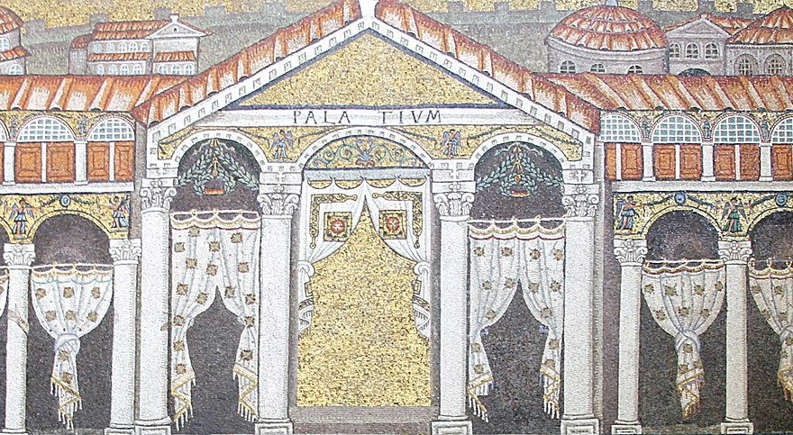
©José Luiz, CC BY-SA 4.0, Wikimedia Commons
A Last Hurrah >
Instead, this Theodoric spent money on revitalizing infrastructure and culture as Rome enjoyed a brief twilight resurgence of its former glory—though executing the philosopher Boethius has probably not done his reputation much good. Nonetheless, Theodoric had his moments.
Instead, this Theodoric spent money on revitalizing infrastructure and culture as Rome enjoyed a brief twilight resurgence of its former glory—though executing the philosopher Boethius has probably not done his reputation much good. Nonetheless, Theodoric had his moments.

©Florian B. Gutsch, CC BY-SA 4., Wikimedia Commons
< The Empire Struts Back
The fall of the Roman Empire corresponded with the reign of Odoacer, so it was over, at least in the west, by 476. Curiously, in 800 CE, the Frankish king Charlemagne proclaimed himself head of the Holy Roman Empire—which, as French philosopher Voltaire quipped centuries later, wasn’t very holy, Roman, or much of an empire.
The fall of the Roman Empire corresponded with the reign of Odoacer, so it was over, at least in the west, by 476. Curiously, in 800 CE, the Frankish king Charlemagne proclaimed himself head of the Holy Roman Empire—which, as French philosopher Voltaire quipped centuries later, wasn’t very holy, Roman, or much of an empire.




















